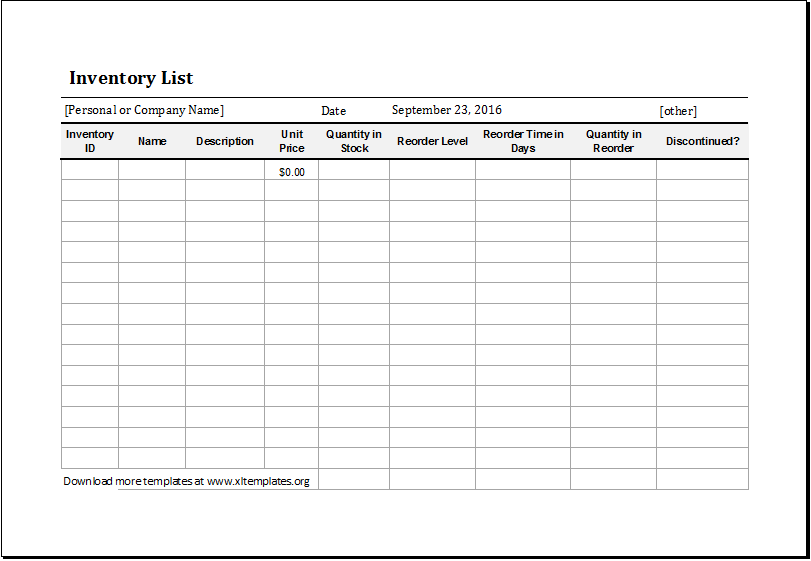Welcome to our in-depth exploration of business inventory list examples, where we unravel the intricacies of managing your inventory effectively. From understanding the different types and components of inventory lists to employing technology and best practices for optimization, this guide will empower you with the knowledge and tools to streamline your inventory management and drive business success.
Methods for Managing Inventory Lists

Managing inventory lists effectively is crucial for businesses to maintain optimal stock levels, reduce waste, and improve overall efficiency. Various approaches can be adopted to manage inventory lists, each with its own advantages and disadvantages.
Periodic Inventory System
The periodic inventory system involves counting the physical inventory at regular intervals, typically at the end of an accounting period. This method provides an accurate snapshot of the inventory on hand at a specific point in time.
Advantages:
- Accurate inventory counts
- Simple and straightforward to implement
Disadvantages:
- Time-consuming and labor-intensive
- Does not provide real-time inventory visibility
Perpetual Inventory System
The perpetual inventory system maintains a continuous record of inventory transactions, updating the inventory balance after each transaction occurs. This method provides real-time visibility into the inventory levels.
Advantages:
- Real-time inventory tracking
- Prevents stockouts and overstocking
- Facilitates better decision-making
Disadvantages:
- More complex to implement and maintain
- Requires accurate data entry
Hybrid Inventory System, Business inventory list example
The hybrid inventory system combines elements of both the periodic and perpetual inventory systems. It involves counting the physical inventory periodically, but also maintains a perpetual inventory record for tracking inventory transactions between counts.
Advantages:
- Balances the accuracy of periodic counts with the real-time visibility of perpetual inventory
- Reduces the frequency of full inventory counts
Disadvantages:
- Can be more complex to implement and manage than the other methods
Wrap-Up: Business Inventory List Example

In conclusion, business inventory list examples serve as a cornerstone for efficient inventory management, enabling businesses to maintain optimal stock levels, reduce costs, and enhance customer satisfaction. By embracing the strategies and technologies Artikeld in this guide, you can transform your inventory management processes, gain a competitive edge, and unlock new levels of operational excellence.
